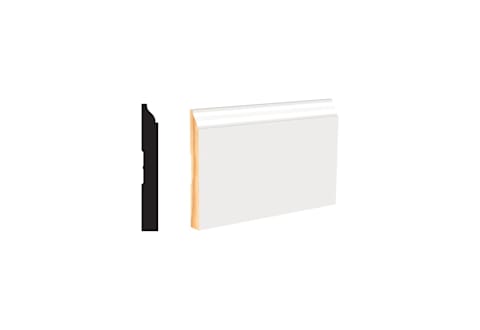- Home
- Education
- Buying Guides
- Buying Guide: Shop for Molding
Buying Guide: Shop for Molding
Molding gives your home attractive framing that serves to mask gaps and ease transitions between rooms and floors.
A Buyer's Guide to Shopping for Molding
In your home, molding serves as a frame that complements and highlights your beautiful new flooring, much like a frame around a masterpiece painting. In addition to its aesthetic value, molding has practical benefits, too. It protects the edges of your flooring, masks the expansion gap where your flooring meets your walls, and also eases transitions between floorings.
At LL Flooring, you'll choose from a wide variety of molding options, with an array of styles and designs to match the look you crave. We offer in-store solutions that can be available for installation quickly, or custom looks when more time is available. We offer perimeter molding that hugs your home's walls and transitional molding for a clean look where planking meets carpeting, stairways, or doorways.
Molding offers your home a finished look with attractive detailing that adds just the right touch to your interiors. But before you make your choice, be sure you know all about the options available to you, so you can make the best decision for your home.
Custom Match for a Direct Fit
For a look that coordinates best with your flooring, a custom match is the choice. Custom matches are available for all molding.
Unfinished Moldings
You have the option of choosing unfinished molding so that you can stain it however you wish. This can be a great choice for anyone who's confident in their staining abilities, as it lets you customize it exactly the way you want it. Unfinished molding won't offer the same wear resistance that finished options will offer, but for specific design requirements, it could be the best choice.
Perimeter Moldings
Perimeter molding lines the base of your walls to provide a transition between floor and wall. It generally comes in three different variations depending on the look you want.
Baseboard basics
Baseboards offer a flat, straight profile, often with a lip or other detailing to offer interest and decoration. They mask the gap between your wall and flooring, which allows the wood in your wall and floors to expand and contract in reaction to the environment. When choosing a baseboard, consider its height in comparison to the room in which it will be installed. A taller baseboard helps a room with high ceilings maintain more appealing visual proportions to the room.

Quarter round for a low profile
A quarter round perimeter molding features round edges and a low-profile appeal. It's used in conjunction with the baseboard and can ease the transition from a baseboard to the floor. It's a great choice when you want a distinct rounded look, which works especially well in more expansive rooms. It also can provide additional coverage of the expansion gap between your walls and floors, such as in larger rooms where bigger expansion gaps are advisable.
Shoe mold for subtle charm
Shoe mold also delivers a rounded profile for a low-key transition from baseboard to the floor, similar to quarter round. Shoe mold is the smaller of the two, so can be a good choice when you want a more subtle appeal.
Transitional Moldings For Smooth Meetings
Wherever your flooring meets up with another kind of floor, such as carpeting, or with a doorway or flight of stairs, transitional molding eases the transition for a more cohesive look. Depending on where it's used, you'll find a variety of types of transitional molding.
T-Molding
This type of transitional molding features a "T" profile, so it's easy to recognize. It creates a transition between two floors of the same thickness. It's also used commonly in doorways to cover the gap between planks of the same type.
Reducers
A flush reducer is used with nail or glue-down floorings to reduce a flooring's height. It meets up flush against the flooring for a secure hold. For floating floor installs, an overlap reducer fastens to a subfloor to float for a better meet. It reduces a floor's height with a smooth, gentle transition.
Thresholds, or end caps
A threshold or end cap is installed when a finished edge to a floor is desired. It's great for the top of a staircase, an exterior door, sliding doors, floors butting up against a tile floor, and for fireplace transitions.
Stair noses
To transition from a top step to a floor, you need a stair nose. An overlap stair nose is used when the landing is on a floating floor, while a flush stair nose is used for nail- or glue-down transitions.
A Small Addition that Makes a Big Impact
Give your home molding that won't go unnoticed, with colors and graining that can match the beauty of your floors. It helps complete your home's look, helps your walls and flooring perform at their best, and provides a cohesion that can make your home feel whole.
Explore the variety of styles and colors available at LL Flooring, and open up new possibilities for your home.





